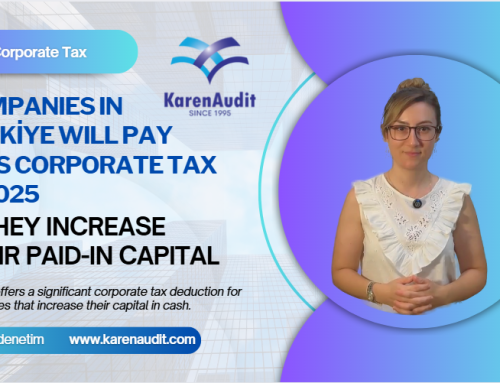In Q2 2025, the unemployment rate was stable at 7.5%, 0.2 points above its level from a year ago
In Q2 2025, the number of unemployed people in France (excluding Mayotte) as defined by the International Labour Office (ILO) increased by 29,000 over the quarter and reached 2.4 million people. The ILO unemployment rate stood at 7.5% of the labour force, stable over the quarter, with the unemployment rate for Q1 2025 slightly revised upwards (+0.1 points, from 7.4% to 7.5%). The unemployment rate remained slightly above its lowest level since 1982 (7.1% in Q4 2022 and in Q1 2023) and clearly below its peak level reached in Q2 2015 (-3.0 points).
Over the quarter, the unemployment rate for people aged 15 to 24 decreased by 0.2 points, to 19.0%, but remained above its level from a year ago (+1.2 points). For people aged 25 to 49, it rose by 0.2 points over the quarter and by 0.3 points over the year, to 6.9%. Finally, for people aged 50 or more, the unemployment rate was stable over the quarter, at 4.8%, 0.2 points below its level from a year ago.
Over the quarter, the women’s unemployment rate was virtually stable (-0.1 points), at 7.3%, while the men’s unemployment rate which increased by 0.2 points, to 7.7%.
Q2 2025 is also the second quarter in which the French “full employment Act” (Loi pour le plein emploi) is implemented, with, over the quarter and cumulatively over the last two quarters, a not significant impact on the unemployment rate and other labour market indicators
The halo around unemployment was virtually stable
Among the inactive people as defined by the ILO, 1.9 million wanted a job without being considered unemployed, because they either did not seek a job or were not immediately available: they made up the halo around unemployment. This number increased very slightly over the quarter (+21,000) but remained below its level from a year ago (-51,000).
Thus, the share of halo in the population of people aged 15 to 64 rose by 0.1 points over the quarter, to 4.4%, after -0.3 points the previous quarter. It stood 0.1 points below its level from a year ago. Over the quarter, the share of halo was stable for people aged 15 to 24 (at 7.2%) and for people aged 50 to 64 (at 2.8%). For those aged 25 to 49, it was virtually stable (+0.1 point), at 4.3%.
The long-term unemployment rate was stable
Among the unemployed, 540,000 people on average declared being jobless and having been job seeking for at least one year in Q2 2025. This number increased by 12,000 over the quarter. The long-term unemployment rate was therefore stable over the quarter and over the year, at 1.7% of the labour force. It remained 0.5 points below its level at the end of 2019.
The employment rate reached a new all-time high
On average, in Q2 2025, the employment rate of people aged 15 to 64 rose very slightly over the quarter (+0.1 point), to 69.6%, after +0.4 points the previous quarter. It stood 0.5 points above its level from a year ago and at its highest level since INSEE started measuring it (1975).
For people aged 15 to 24, the employment rate was virtually stable over the quarter and over the year (+0.1 points), at 35.0%. For people aged 25 to 49, it was stable over the quarter, at 83.1%, 0.2 points above its Q2 2024 level. Finally, for older people, the employment rate continued to rise. Among people aged 50 to 64, it rose by 0.2 points over the quarter and by 1.2 points over the year, reaching 69.4%, a new high since 1975. In particular, the employment rate for people aged 55 to 64 increased by 0.3 points over the quarter and by 1.7 points over the year, at 61.8%, its highest level since 1975.
The share of part-time employment was virtually stable over the quarter but remained clearly below its level at the end of 2019
In Q2 2025, the full-time employment rate was stable over the quarter, at 57.8%, 0.2 points above its level from a year ago. The part-time employment rate rose by 0.2 points over the quarter and by 0.3 points over the year, to 11.8%. As a result, the share of part-time employment in total employment barely increased (+0.1 points) over the quarter and over the year, to 17.7%. This share stood slightly above its lowest level since 1996 (17.1% in Q3 and Q4 2022) but 1.1 points below its level at the end of 2019.
Underemployment rose slightly over the quarter
In Q2 2025, 4.5% of employed people were underemployed. This share increased by 0.2 points over the quarter and over the year but remained 1.4 points below its level at the end of 2019.
On average, in Q2 2025, 16.5% of participants in the labour market (active people or in the halo around unemployment) were constrained in their labour supply, either by the absence of a job (unemployed or halo around unemployment), or in a situation of underemployment. This share rose by 0.2 points over the quarter and by 0.1 points over the year, but remained clearly below its level at the end of 2019 (-2.4 points).
In Q2 2025, the average number of hours worked per job was stable over the quarter, at 31.2 hours per week (adjusted for seasonal variations and calendar effects). It stood barely above its level from a year ago (31.1 hours per week in Q2 2024). Since mid-2022, the number of hours worked has stabilised at a level similar to that before the health crisis (31.3 hours in Q4 2019).
Self-employment rate rose over the quarter
The permanent employment rate for people aged 15 to 64 was virtually stable (-0.1 points) over the quarter, at 51.2%, 0.2 points above its level from a year ago. The employment rate on fixed-term contract or temporary work was virtually stable (+0.1 points) over the quarter and over the year (-0.1 points), at 6.5%. The self-employment rate rose by 0.2 points over the quarter, to 9.1%, bringing the year-on-year rise to 0.4 points. It reached its highest level since INSEE started measuring it on a quarterly basis (2003). Finally, the work-study employment rate was stable over the quarter, at 2.5%, slightly above its Q2 2024 level (+0.1 points).
The activity rate rose again
The activity rate of people aged 15 to 64 rose by 0.2 points over the quarter, after +0.5 points the previous quarter. It stood at 75.3%, its highest level since INSEE started measuring it (1975), 0.7 points above its level from a year ago and 2.5 points above its level at the end of 2019.
Over the quarter, the activity rate for young people was virtually stable (+0.1 points), at 43.3%, after +1.5 points the previous quarter. It stood 0.8 points above its level from a year ago. For people aged 25 to 49, it rose by 0.2 points over the quarter and by 0.5 points over the year, to 89.3%, its highest level since early 2011; in this age group, the rises were only driven by women. Finally, for people aged 50 to 64, the activity rate increased by 0.2 points over the quarter, bringing the year-on-year rise to 1.0 point; it reached 72.9%, its highest level since INSEE started measuring it (1975).
The share of young people neither in employment nor in education or training was stable
In Q2 2025, the share of young people aged 15 to 29 neither in employment nor in education or training (NEET) was stable, at 12.8%. This share stood 0.3 points above its level from a year ago and 0.6 points above its level at the end of 2019.
Source: INSEE
Legal Notice: The information in this article is intended for information purposes only. It is not intended for professional information purposes specific to a person or an institution. Every institution has different requirements because of its own circumstances even though they bear a resemblance to each other. Consequently, it is your interest to consult on an expert before taking a decision based on information stated in this article and putting into practice. Neither Karen Audit nor related person or institutions are not responsible for any damages or losses that might occur in consequence of the use of the information in this article by private or formal, real or legal person and institutions.






